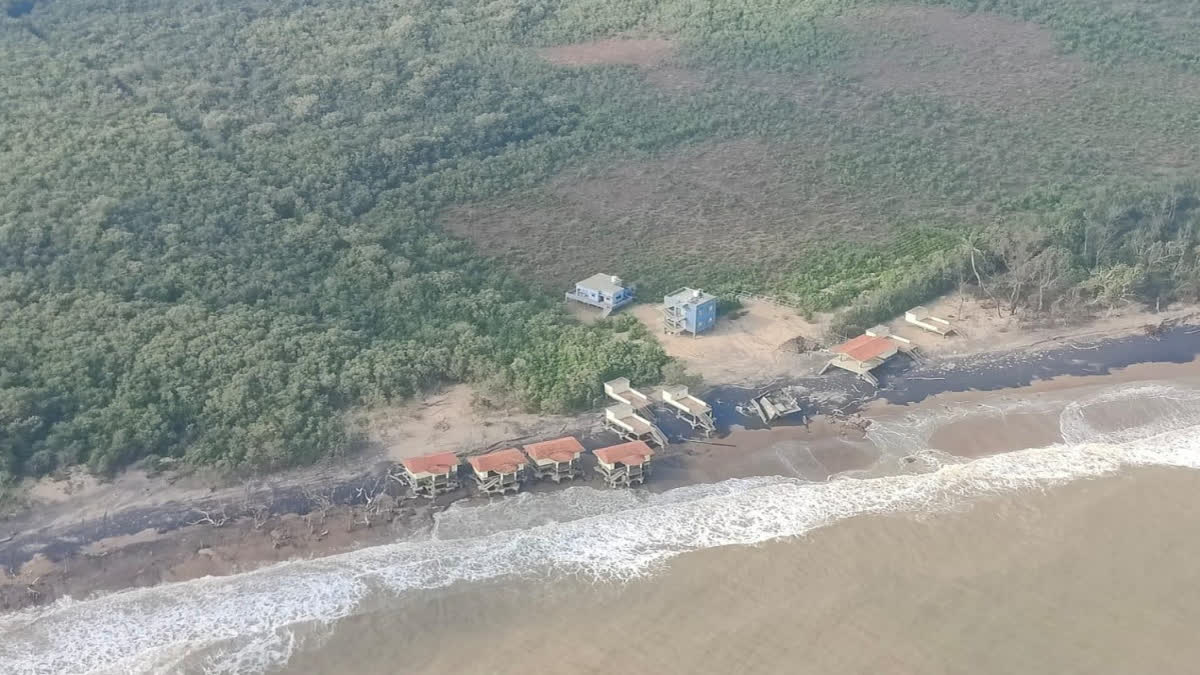By Tapas Kumar Parida
Bhubaneswar: As a symbolic yet significant step towards strengthening coastal security, the National Flag will fly on Odisha’s coastal islands starting January 26. This initiative aims to instill a sense of national pride while deterring infiltrators along the 480 km-long coastline.
The hoisting of the National Flag on islands is a common feature in other parts of the country, though Odisha will be seeing this happening for the first time.
Another island on Odisha coast (Indian Coast Guard) Police DG YB Khurania spoke on the comprehensive measures being implemented to safeguard Odisha’s maritime borders. A drone survey of the coastline has already identified 62 islands requiring immediate attention. Police teams are currently visiting these locations to conduct detailed inspections, marking the first phase of a broader security overhaul.
Small islands on Odisha coasts (Indian Coast Guard) “Flying the Tricolor on these islands is a symbolic effort to assert sovereignty and create a psychological deterrent against potential infiltrators,” said DG Khurania.
Challenges in Coastal Security
Odisha’s coastline, an international border adjoining Bangladesh, faces security challenges. Fishermen from neighboring countries often cross into Indian waters, while infiltrators exploit the porous coastal routes to enter Odisha. The region’s strategic importance and vulnerabilities necessitate robust and innovative security measures.
Boosting Resources and Infrastructure
Recognizing the challenges, the Odisha government is focusing on enhancing the resources of its coastal police stations. Currently, 18 coastal police stations operate with just 15 boats. Efforts are underway to rent additional vessels for patrolling, while plans are being drawn to acquire fast interceptors and specialized boats for deep-sea and shallow-water operations.
Odisha DGP YB Khurania (ETV Bharat) “To guard the 480 km-long maritime border, including the 62 islands, advanced vessels are being procured, and modern drones deployed to monitor movements in real time,” Khurania added.
Surveillance drones are expected to cover a 10 km radius, providing critical intelligence on intruders or unusual activities even before patrol boats reach the scene. Plans are also in place to train maritime police personnel in navigation and technological operations to enhance efficiency.
Island on Odisha coasts (Indian Coast Guard) Human Resource Expansion
To address manpower shortages, the administration plans to recruit around 3,000 personnel with expertise in maritime operations. Retired Coast Guard officers, naval personnel, and ex-servicemen are being considered for these roles to bring valuable experience to the force.
Integrated Efforts and Technology Upgrades
Joint operations involving the police, customs, and forest department, such as Operation Hamla and Operation Gauntlet, have previously been conducted to counter potential threats. However, former naval officer Captain Saroj Pradhan pointed out gaps in Odisha’s coastal preparedness compared to other states.
Ex-Naval officer Captain Saroj Pradhan (ETV Bharat) “The lack of trained personnel, inadequate equipment, and inefficient patrolling methods hinder effective coastal security. Specialized training and better coordination between agencies are crucial,” Pradhan said.
The absence of technology such as Automatic Identification Systems (AIS) on fishing boats and biometric chips for fishermen further increases the risk of unauthorized movements. Implementing these technologies will help track boat locations and identify intruders more effectively.
Small islands on Odisha coasts (Indian Coast Guard) Strategic Importance of Odisha’s Coastline
Odisha’s coastline is home to critical infrastructure, including ports, tourist destinations like Puri and Konark, and sensitive research centers. These areas, along with floodplains and open spaces, are vulnerable to intrusions and require constant vigilance.
The state’s maritime jurisdiction extends up to 12 nautical miles, managed by the coastal police, while the Coast Guard oversees security up to 200 nautical miles. The Indian Navy handles the remaining stretch. However, limited coordination among these agencies has left certain areas vulnerable.
Future Plans for Coastal Security
The state government has proposed setting up a dedicated Coastal Security Office equipped with modern monitoring and control systems. This office will serve as a hub for drone surveillance, data analysis, and coordination among various agencies.
Efforts are also being made to enhance radar and air surveillance capabilities. These initiatives aim to create a seamless security network that integrates technology and human resources to counter emerging threats.
Addressing Key Vulnerabilities
Fishing harbors and landing points remain critical entry points for potential infiltrators. A comprehensive database of all fishing boats and crews, along with mandatory AIS installation, is essential for effective monitoring.
Pradhan stressed that coastal police must be better equipped and trained to handle high-risk scenarios. “Patrolling without firearms or adequate training is not only ineffective but also unsafe for personnel,” he noted.
Read More
